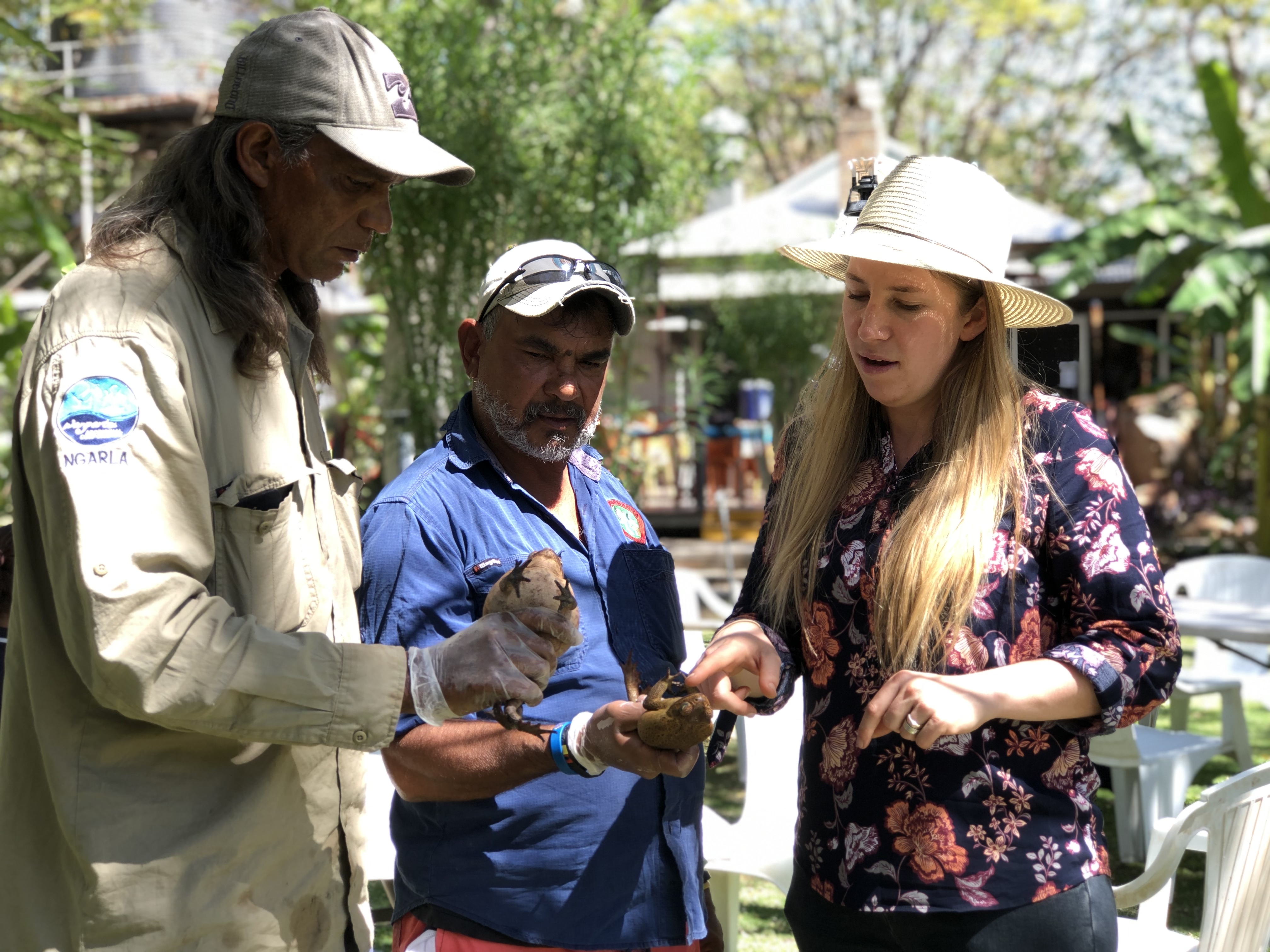Media release
From:
A landmark study published in the journal Conservation Letters this month outlines a clever strategy pioneered by Macquarie University researchers to protect vulnerable native species from the devastating impacts of invasive cane toads.
The study, led by wildlife biologist Dr Georgia Ward-Fear, a Postdoctoral Research Fellow at Macquarie University, showed high survival rates in groups of goannas in the remote Kimberley region of Western Australia trained to avoid poisonous cane toads.
This work in adaptive management for conservation is based on decades of cane toad research and involves a broad group of people and organisations.
Together with Macquarie University evolutionary biologist Professor Rick Shine, Dr Ward-Fear ran small scale field trials in 2016 showing when lizards are first exposed to younger, smaller cane toads, they get sick from eating them, but don’t die. Most will then avoid eating another cane toad and survive.
Using sites at the frontline of the cane toad invasion, the study field-tested this method (called ‘conditioned taste aversion’) on groups of yellow-spotted monitors, a tropical goanna species heavily impacted by cane toad spread.
Initially, the team taste-trained individual goannas in the field, tracking them with radio tags during the arrival of the highly poisonous adult cane toads heading the invasion frontline. The taste-trained goannas had far better survival rates.
The ‘taster toad’ method was then trialled at an ecosystem scale.
The results were remarkable; at control sites which did not introduce the small ‘taster toads’ before the larger, highly poisonous adult cane toads arrived, goanna populations plummeted by up to 94 per cent.
However, at sites where taste aversion was trialled, goanna populations ranged from 35 per cent to 140 per cent of pre-invasion levels by the time the study finished.
More to the story in The Lighthouse: https://lighthouse.mq.edu.au/article/april-2024/cane-toads



 Australia; NSW; WA
Australia; NSW; WA



